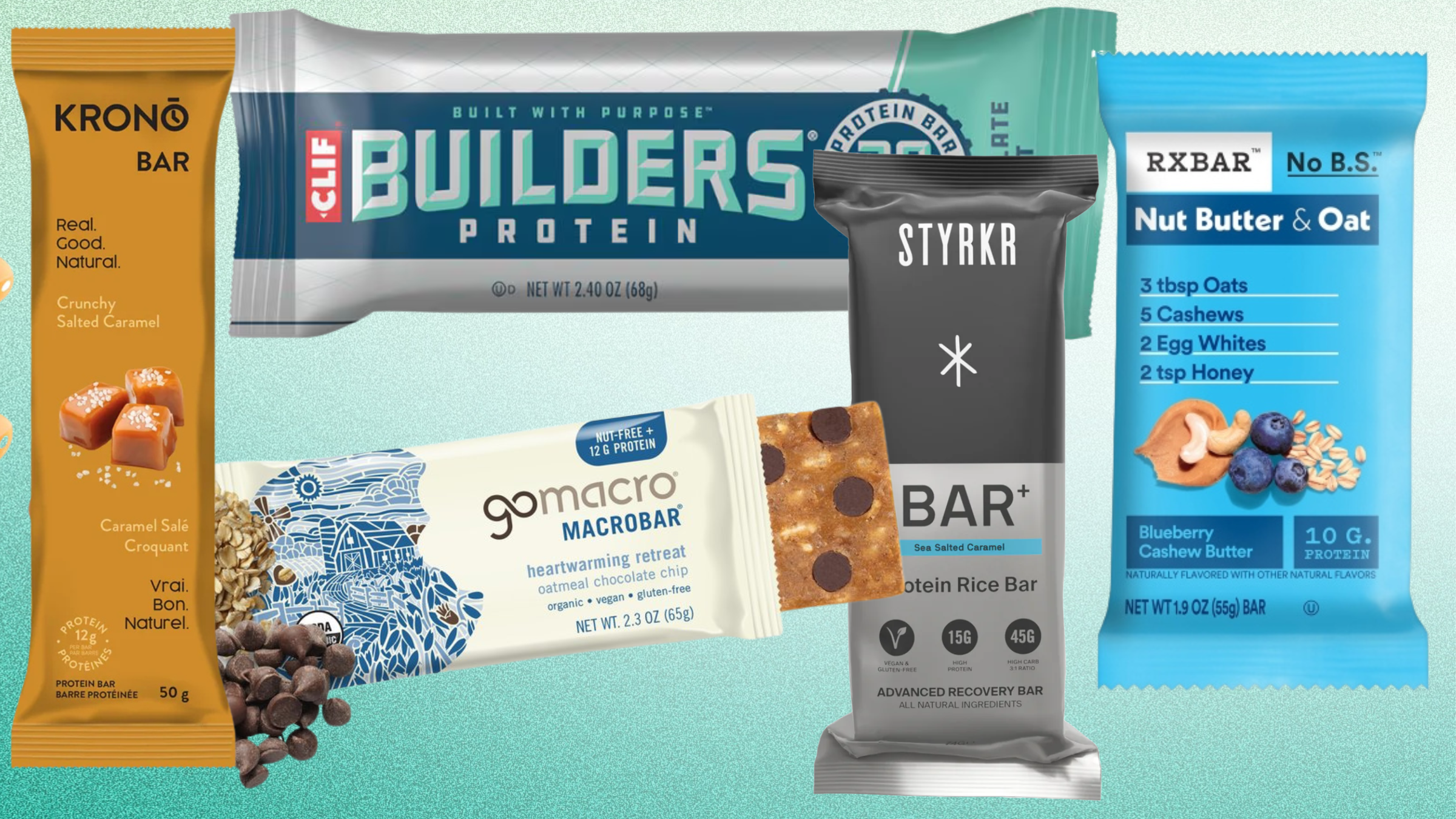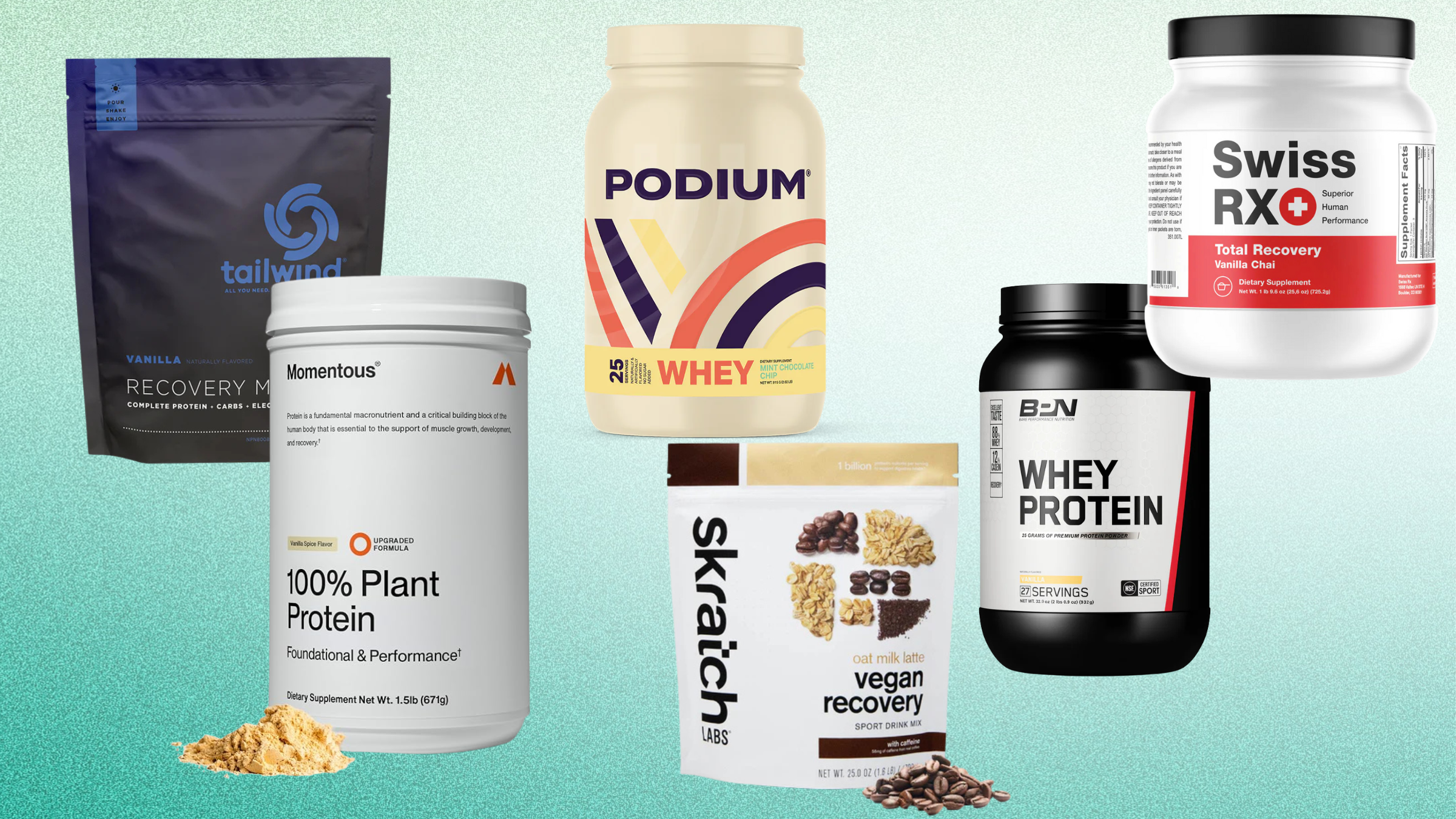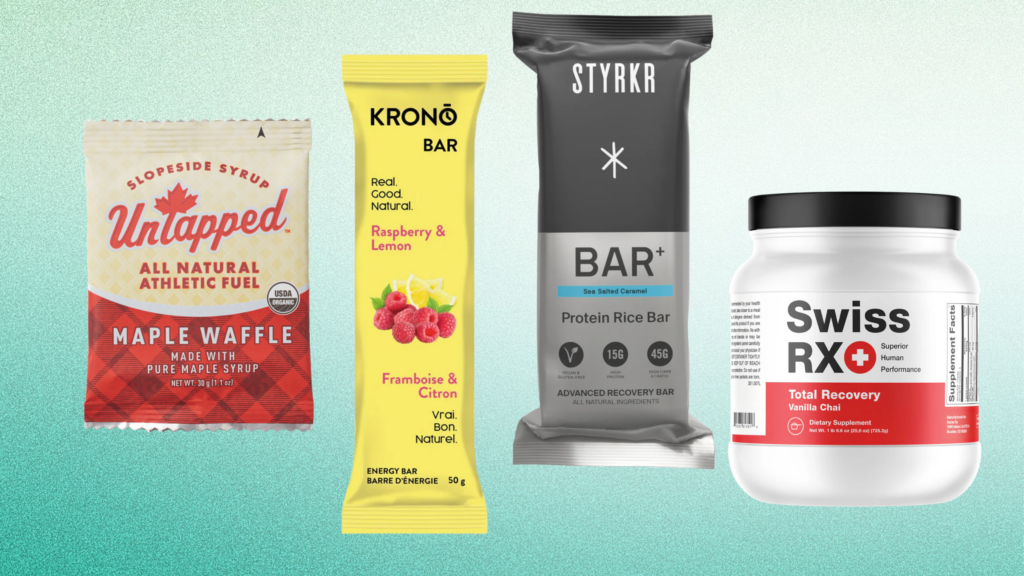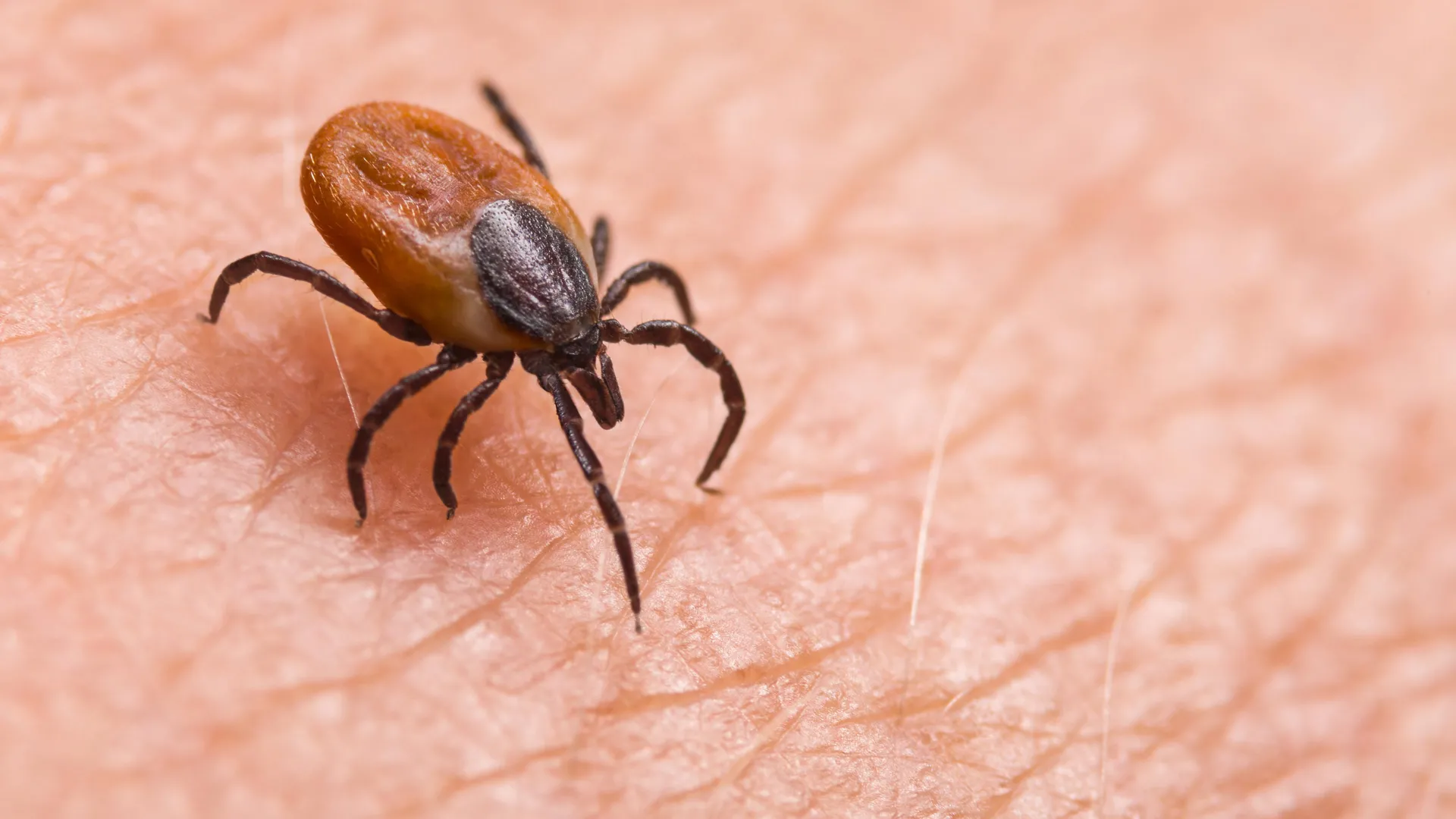“], “filter”: { “nextExceptions”: “img, blockquote, div”, “nextContainsExceptions”: “img, blockquote, a.btn, a.o-button”} }”>
New perk: Easily find new routes and hidden gems, upcoming running events, and more near you. Your weekly Local Running Newsletter has everything you need to lace up!
>”,”name”:”in-content-cta”,”type”:”link”}}”>Subscribe today.
A proper race nutrition plan can be the difference between a “DNF” and a smiling finish line photo. Keeping a steady flow of carbohydrates and electrolytes in the system is particularly integral to the success of endurance runners. That’s why ultramarathoners need to train their guts, and why nutrition is called “the fourth discipline” among triathletes. While it’s difficult enough to nail down a nutrition plan that keeps your stomach, tastebuds, and body happy all at once, adding allergens to the mix can make it even more difficult. Some products, like gels, are generally safe for most runners to consume, but energy bars, protein bars, stroopwafels, and protein powders can be rife with common allergens.
We talked to Susan Kitchen, a board-certified sports dietitian, athlete, author, triathlon coach, and owner of Race Smart, a service that helps athletes hone their training and eating habits. Joining her is Shelly Bloom, a multisport athlete and coach as well as a neuropharmacologist and professor at Duke University. Here, they talk about the precautions that runners with allergies must take and offer assessments to help you sift through the myriad performance nutrition products on the market.
Section divider
What Are Food Allergies and Intolerances?
To start, let’s be clear on what allergies and intolerances are. According to Bloom, 11 percent of adults in the United States live with food allergies, while 20 percent experience food intolerances. Food intolerances are often confused with food allergies because their symptoms can appear similar to one another. However, they do not have the same causes and therefore require different responses. “In a nutshell, food allergies involve the immune system, while food intolerances involve the digestive system,” Bloom says. A food intolerance, such as a FODMAP sensitivity, is “generally due to the reduced ability to absorb or digest the ingredient appropriately; instead, gut bacteria do the digesting, giving off gas and generating [symptoms like] bloating and diarrhea.” Receiving a professional diagnosis of a food intolerance can help you better manage symptoms and learn about other ingredients that might quietly be causing harm; for instance, knowing that you have an intolerance to polyols (the “P” in FODMAPs) might mean avoiding sugar alcohols like sorbitol and erythritol.
In contrast, food allergies follow an immune system roadmap. “A food allergy is a specific immune reaction to the offending ingredient (an allergen – typically a protein), resulting in a ‘hypersensitivity’ to that ingredient,” Bloom says. When IgE antibodies are produced to combat an allergen, immune cells are triggered to release histamine. With repeated exposure, the histamine contributes to “an immediate, larger, allergic response, usually in the skin (rash) and bronchioles (wheezing), but also in the GI tract (GI distress), and in certain cases, in the cardiovascular system (profound hypotension).” When allergies are especially severe, Bloom said, “anaphylaxis can occur quickly within minutes or even up to four hours after eating.” After receiving a professional diagnosis, you can use oral antihistamines and/or epi-pens to help mitigate symptoms.
Non-IgE reactions, which are less common in adults and often delayed by a few days, are usually more inflammatory in nature. Bloom said that such reactions “can occur primarily in the GI tract (abdominal pain, diarrhea, vomiting, gastric reflux, etc.), but can also affect the skin and lungs. Although sometimes severe, they do not cause anaphylaxis; an epi-pen will not help!”
Bloom further explained that because allergens (in the form of proteins) must be metabolized into smaller peptides before passing through intestinal membranes and triggering antibodies, “some breach of the intestinal barrier, i.e., a leaky gut” must have occurred. So if your gut has been damaged in the past by “toxins, bacterial infections, or other disorders that damage the small intestinal barrier, including celiac disease,” or even vigorous physical activity like that performed by elite athletes, you may be more at risk.
With professional consultation, and oftentimes some experimentation, runners can gauge whether they are suffering from food intolerances or food allergies and make a plan to eliminate offending ingredients from their diets. While food intolerances can sometimes be forgiving, especially in smaller amounts, repeat exposure to allergens can result in increasingly severe reactions, so it is crucial to accurately understand your situation. Equipped with that knowledge, you can then make informed decisions on what and how much to eat.
The Best Sports Nutrition Products for Food Sensitivities
Let’s take a closer look at the potential allergens in each type of performance nutrition product. But before we do, here’s how to interpret the charts in this article:
- X demarcates allergens contained
- * demarcates ingredients that may be present according to the ingredient label, whether due to potential substitutions, shared manufacturing equipment, or shared facilities
- Companies are not required to explicitly state on packaging if a product was manufactured in the same facility as other allergens – sometimes they do, and sometimes they don’t, and messaging is not even consistent within the same brand. So, for example, if a brand offers a peanut butter flavor and you are allergic to peanuts, you may want to exercise caution around its other flavors, too, even if no mention of peanuts is made on their wrappers.
Section divider
Allergen-Friendly Energy Bars
Carbohydrate-rich energy bars work well as pre-run snacks consumed an hour or two before your run.Many such bars contain protein, fiber, and fat in them, Bloom says, all of which are slow to be absorbed into the bloodstream. Bloom cautioned that chicory root fiber is a common energy bar ingredient that is also a FODMAP; therefore, people with insulin sensitivity may have difficulty digesting it.
Krono energy bars are among the best choices for those who experience intense allergies. Every single product sold by the brand is vegan, gluten-free, dairy-free, soy-free, and nut-free. With flavors ranging from chocolate and espresso to strawberry and pineapple, there’s something for everyone in this energy bar line. Maurten bars and BPN endurance bars are also fantastic choices across the board; just note that a handful of allergens are present in each of their respective manufacturing facilities.
When it comes to long endurance events, Kitchen says, “Clif Bars contain protein, carbohydrates, and fat, and help increase satiety due to a decreased gastric emptying rate. But beware: Clif Bars [can] contain wheat (gluten), soy, milk, peanuts, tree nuts, and barley.” Bloom also stressed that Clif Energy Bars are not suitable for those with soybean allergies or intolerances, and many flavors include either tree nuts or peanuts. Meanwhile, all Skratch Labs energy bars contain tree nuts, even in unassuming flavors like cinnamon + oatmeal, and raspberry + lemon.
| Product | Flavor | Milk | Eggs | Fish | Crustacean shellfish | Tree nuts | Peanuts | Wheat | Soybeans | Sesame |
| Clif Bar Energy Bar | Cool mint chocolate (with caffeine) | * | * | * | * | X | * | |||
| Peanut butter banana dark chocolate | * | * | X | * | X | * | ||||
| Blueberry almond crisp | * | X | * | * | X | * | ||||
| Krono Bar energy bars | Raspberry and lemon | |||||||||
| Cherry and chocolate | ||||||||||
| Apricot and cranberry | ||||||||||
| Maurten | Solid 160 | * | * | * | * | * | * | |||
| Skratch Labs Energy Bar | Peanut butter chocolate | X | X | |||||||
| Cinnamon and oatmeal | X | |||||||||
| Cherries and pistachios | X | |||||||||
| BPN Go Bar Endurance Bars | Original oat | * | * | * | * |
Section divider

Allergen-friendly Protein Bars
Protein bars, which are different than energy bars in that they provide much more protein and fewer carbs, can replenish glycogen stores and provide the building blocks to start rebuilding protein in damaged muscle fibers from exercise. “However, some people use them as snacks or ‘mini meals’ to add protein to their daily load,” Bloom says. When consuming plant-based protein bars, she recommends ensuring that all nine essential amino acids are accounted for. However you incorporate protein bars into your diet, there are plenty from which to choose.
Like its energy bars, each of Krono’s three protein bar flavors—brownie, crunchy salted caramel, and chocolate and banana—are free of all major allergens. That means they are gluten-free, soy-free, nut-free, dairy-free, and vegan. Similarly, each Styrkr recovery bar (also known as Bar+) is generally safe for those with allergies, except if you need to avoid soybeans or are especially sensitive to potential cross-contamination. Finally, while some flavors do contain peanuts or tree nuts, GoMacro bars are certified vegan, gluten-free, and soy-free.
Be more cautious around RX protein bars, all of which contain eggs and nuts (some flavors contain peanuts, while others contain cashews and/or almonds). Finally, Clif Builders bars are a mixed bag when it comes to peanuts and tree nuts, and they are all soy-based.
| Product | Flavor | Milk | Eggs | Fish | Crustacean shellfish | Tree nuts | Peanuts | Wheat | Soybeans | Sesame |
| Krono Bar Protein Bar | All flavors | |||||||||
| Styrkr Recovery Bar (Bar+) | All flavors | * | * | * | * | X | * | |||
| RXBar | Blueberry cashew butter | X | X | |||||||
| Honey cinnamon peanut butter | X | X | ||||||||
| Strawberry | X | X | ||||||||
| Clif Builders | Chocolate peanut butter | * | * | X | X | * | ||||
| Chocolate mint | * | * | * | X | * | |||||
| Vanilla almond | * | X | * | X | * | |||||
| GoMacro | Oatmeal chocolate chip | * | * | |||||||
| Peanut butter chocolate chip | * | X | ||||||||
| Dark chocolate + almonds | X | * |
Section divider

Allergen-Friendly Protein Powder
Kitchen and Bloom agree that protein powder is best used when other protein-rich foods like yogurt or chocolate milk are not available. Bloom suggests that people with allergies and intolerances look for products containing amino acids, which are not usually allergenic—they are used by cells to make new proteins. She points to Tailwind Recovery Mix as an example, which contains an assortment of essential amino acids in addition to organic rice protein powder.
Today, there are plenty of plant-based protein powders on the market. A few of the most allergen-friendly ones are the SwissRX Total Recovery protein powders, the Momentous plant-based protein powders, and Skratch Labs’ oat milk latte protein powder. If dairy is not a problem for you, Skratch Labs’ recovery sport drink mix comes in three flavors that contain milk. Aside from that, though, no other allergens are listed. The same is true for every flavor of Momentous’ whey protein isolate and Recovery products (though Kitchen notes that depending on the manufacturing facility, Momentous whey protein isolate may cross-contact with soy or nuts).
When it comes to BPN and Podium, those with allergies need to be a bit more careful. BPN protein powders may contain milk, soy, coconut, and/or peanuts. Podium does not carry vegan protein powder, and its whey products might contain peanuts, wheat, and/or soybeans. The presence of these allergens is not always obvious; for instance, Podium’s peanut butter crunch and mint chocolate chip flavors both contain wheat.
| Product | Flavor | Milk | Eggs | Fish | Crustacean shellfish | Tree nuts | Peanuts | Wheat | Soybeans | Sesame |
| Skratch Labs Recovery Sport | Chocolate | X | ||||||||
| Horchata | X | |||||||||
| Oat milk latte | ||||||||||
| SwissRX Total Recovery | Chocolate Mint | |||||||||
| Vanilla Chai | ||||||||||
| Momentous Grass-Fed Whey Protein Isolate | All flavors | X | ||||||||
| Momentous 100% Plant Protein Powder | All flavors | |||||||||
| Momentous Recovery | All flavors | X | ||||||||
| BPN Whey Protein | Banana French toast | X | X | |||||||
| Chocolate peanut butter | X | X | X | |||||||
| BPN Vegan Protein Powder | Oatmeal cookie | X (coconut) | ||||||||
| Podium Whey | Mint chocolate chip | X | * | * | * | * | * | X | * | |
| Peanut butter crunch | X | * | * | * | * | X | X | X | ||
| Podium Isolate Whey | Vanilla buttercream | X | * | * | * | * | * | * | * |
Section divider

Allergen-friendly Stroopwafels
Stroopwafels are popular among athletes because they are an excellent source of carbohydrates; one Honey Stinger waffle, for example, typically contains 16-21 grams of carbohydrates. The rate of glucose absorption from stroopwafels into the bloodstream varies among athletes, Bloom says, but maltodextrin and fat can slow it down.
The main allergens to look out for in stroopwafels are milk, eggs, wheat, and soybeans. While multiple options exist that forgo the first three ingredients, soybeans are more difficult to avoid. Except for Rip Van Wafel’s original line, soybeans are present in most stroopwafels on the market. And if you can find a stroopwafel product that contains neither soybeans nor gluten, let us know! Because we couldn’t find it.
Gluten-free stroopwafels haven’t always been a thing, but in recent years, multiple brands have heard consumers’ pleas and released lines of these sweet treats made with ingredients like rice flour and tapioca flour instead of wheat flour. Gu, Vafels, Honey Stinger, and Rip Van Wafel have all joined the gluten-free party. Plus, vegan stroopwafels are available from brands like Vafels and UnTapped.
| Product | Flavor | Milk | Eggs | Fish | Crustacean shellfish | Tree nuts | Peanuts | Wheat | Soybeans | Sesame |
| Podium Protein Stroopwafel | Caramel | X | X | X | X | |||||
| Chocolate Brownie | X | X | X | X | ||||||
| Gu Energy Stroopwafel | All gluten-free flavors | * | X | X (coconut) | X | |||||
| Salty’s Caramel | * | X | X (coconut) | X | X | |||||
| Campfire S’mores | * | X | X (coconut) | X | X | |||||
| Vafels Original Stroopvafels | All flavors | * | * | X | X | |||||
| Vafels Gluten-Free Stroopvafels | All flavors | * | * | * | X | |||||
| Honey Stinger Energy Waffle | Gluten-free salted caramel | * | X | X | ||||||
| Original peanut butter | * | X | X | X | X | |||||
| Original honey | * | X | X | X | ||||||
| UnTapped Waffles | All varieties | X | X | |||||||
| Rip Van Wafels | Gluten-free snickerdoodle | X | X | X | ||||||
| Honey & oats | X | X | X | |||||||
| Chocolate brownie | X | X | X |









